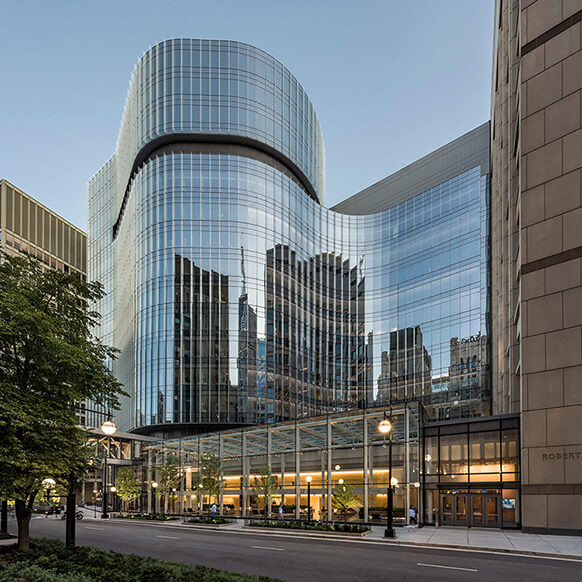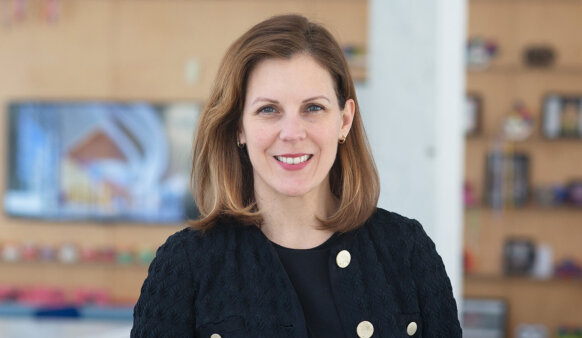This year’s Convergence Symposium leveraged the energy and activity happening in Chicago – a hotbed of innovation that often flies under the radar, at least in comparison to its coastal cousins. The symposium brought together six speaker presentations and one dynamic panel discussion, adding new thought and perspective to how we conceive of convergence and more specifically how ideas are brought to value. This theme, “Ideas to Value,” continued the Convergence conversation that we started last year at MIT’s Media Lab.
Below, a few of the takeaways from a day of thought-provoking conversations at UI Labs (our gracious hosts).
Chicago: Unique Geography and Culture Enable Convergent Discovery
Kicking things off, Caralynn Nowinski Collens, CEO of UI Labs, provided the initial spark of this conversation by noting the importance of Chicago taking advantage of the “fourth industrial revolution,” leveraging Chicago’s history of industry and encouraging training and exploration in the manufacturing realm. UI Labs, short for University Industry Labs, also provided tours of their celebrated innovation accelerator space for advanced manufacturing.
Kristin Barrett, Senior Director at the University of Chicago’s Polsky Center for Entrepreneurship and Innovation, is committed to leveraging Chicago’s neighborhood geography. Barrett explained how UChicago is diversifying and investing in communities around their South Loop campus in Chicago, focusing on nine specific neighborhoods. UChicago frames convergent discovery by seeking multiple, diverse voices, and sparking economic development in areas like the South Loop that need to jumpstart positive gains across the board.
Chicago is centrally located in our country, and this location comes with advantages. Dr. Phil Hockberger of Northwestern University’s Feinberg School of Medicine used the International Center for Advanced Computing Research and its Starlight project as an example of Chicago’s centrality playing its advantage. The fiber hub helps provide enhanced technologies for a global network.
Dr. Hockberger commented, “If you were to ask any scientist: ‘What do you need?’ They’d ask for all the bandwidth and computational power, the largest building exchange of information.” Data and analytics are a critical seam between interdisciplinary work. Northwestern University’s Starlight steps in with its international reach, funded by grants from around the country and world to share data.
In addition to this one organization Dr. Hockberger discussed, we learned there are several organizations and institutions working towards convergence. He suggests focusing on what we don’t have, optimizing what we already do, and leverage those strengths. “Convergence asks scientists to look at the big picture,” Hockberger added.
Bob Geolas, Partner at HR&R Advisors, referenced an interesting example of how geography can abet discovery with his experience leading the re-development and re-imagining of the Research Triangle Park, or “RTP,” in North Carolina. RTP needed to change the dynamic of its physical and programmatic functions – establishing a urban experience in a suburban setting. The key, Bob said, was thinking about how to support many different kinds of people in one geographic area and to not be so prescriptive as to assume what they need to discover and explore. Instead, let the people own it. Allow them to enter and “settle” their hub, to take ownership of the space whether they be an artist, freelancer, journalist, or musician.
Place Matters: Design Consideration for Convergent Research
Dr. Hockberger tackled this topic near the end of the Symposium, stating that places like Chicago possess a special blend of universities, resources, affordability, and a collaborative culture unique to the United States. Phil argued that this blend in Chicago is driving changes in academic and industrial sectors–enabling university-to-university partnerships and positioning Chicago to be the next great international research and development hub.
Dr. Suzet McKinney, CEO and Executive Director of the Illinois Medical District (IMD), shared information about a medical district model that accommodates convergent research and discovery. Place-making is key to the IMD’s success, and Dr. McKinney sees the District’s location, being less than 10 minutes away from the downtown Loop as an advantage. The IMD also aims to transform 35 acres of raw land in ways that will help create “the world’s next great healthcare innovation district.” McKinney’s vision for IMD is a mixed-use environment comprised of hotels, housing, retail, healthcare facilities, and research buildings that will bring positive change to the west side of Chicago–an area that has struggled with lack of access to jobs and education, and a dearth of community cohesion. Through strategic development, the IMD would invigorate the community, helping invigorate collaboration, and kick-starting convergence. Walkability and public safety will be paramount in the District, with new buildings engaging the street level. This transformation of the area will help keep people healthy and create public amenity spaces within new buildings that the community can use for events,activities and economic opportunities.
HR&A’s Geolas advocated for creating events and activities that link to local schools and universities, making convergent discovery accessible and affordable.

